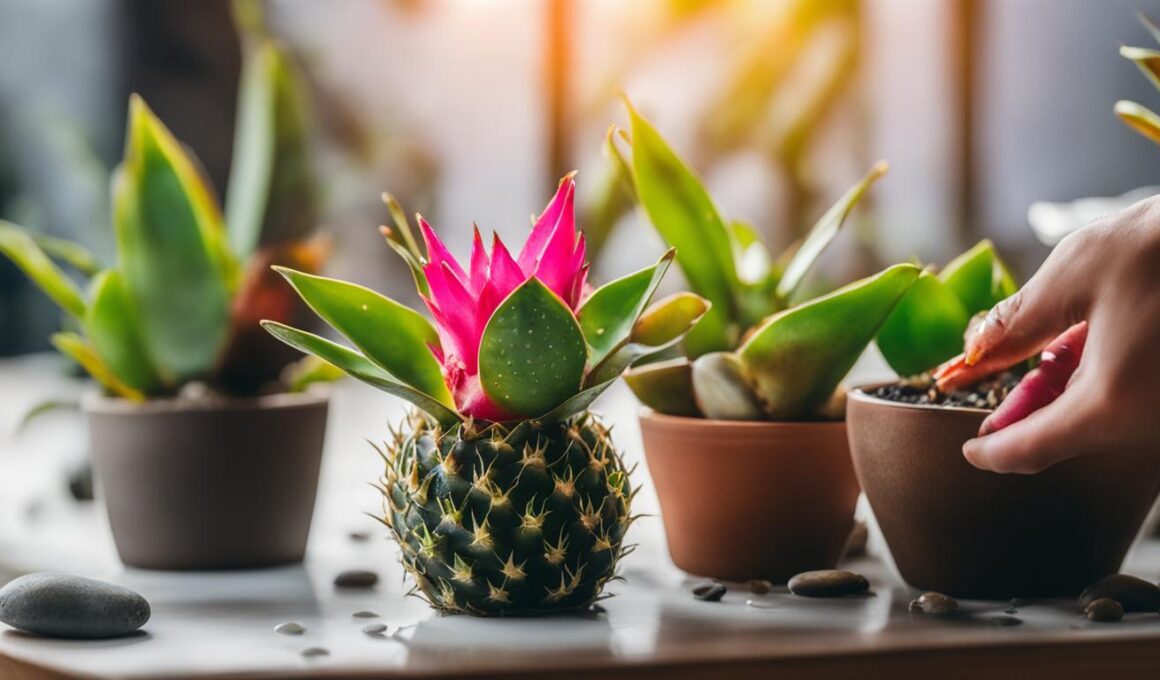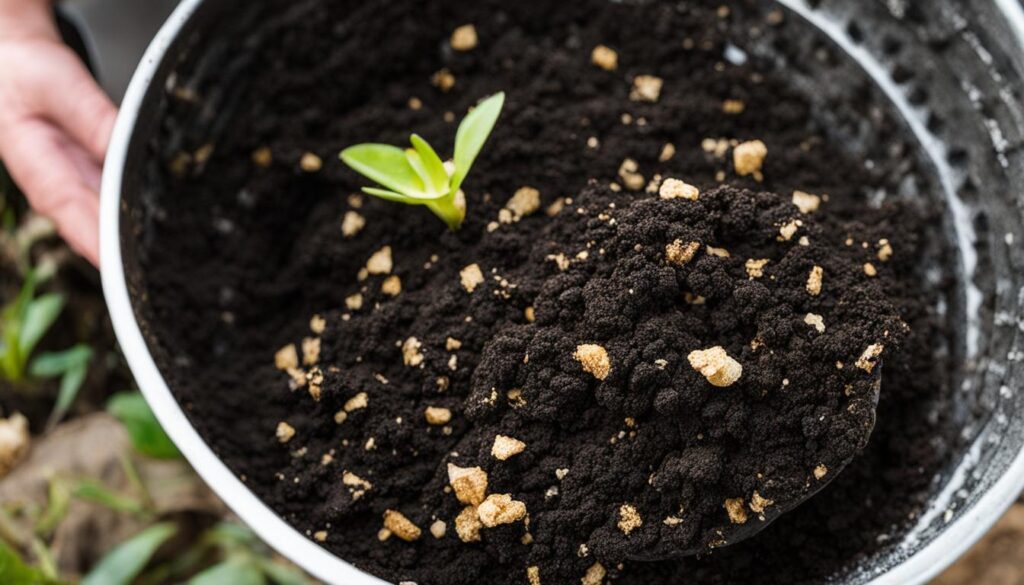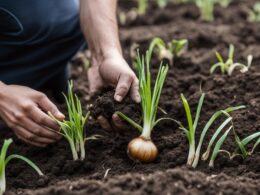Dragon fruit, also known as pitaya or pitahaya, is a fruit that comes from the cactus species Hylocereus. It is native to Mexico, Costa Rica, and El Salvador and is cultivated in tropical and subtropical regions. Growing dragon fruit in pots is a great option for urban gardening and for those with limited space, such as small gardens or patios. Dragon fruit plants are climbing plants that need support to grow, and they thrive in dry areas with partial sun. They produce unique, large flowers that bloom only at night and have a delightful scent. Dragon fruits come in various colors, including dark red, pink, and yellow. They can be grown from seeds, cuttings, or purchased as potted plants.
If you are interested in urban gardening and want to make the most of your small spaces or patio, growing dragon fruit in pots is the perfect solution. Not only will you have a beautiful plant to enhance your space, but you can also enjoy the delicious and exotic fruits it produces. In this article, we will guide you through the process of growing dragon fruit in pots, including choosing the right variety, providing the right conditions, and taking care of your plant to ensure successful growth. Let’s get started!
Varieties of Dragon Fruit for Growing in Pots
When it comes to growing dragon fruit in pots, there are several varieties to choose from, each with its own unique characteristics. Whether you prefer a sweet or sour flavor, or if you’re drawn to a specific color, there is a dragon fruit variety that is perfect for your pot garden.
Sweet Dragon Fruit Varieties:
1. White-Fleshed Dragon Fruit: Also known as pitaya blanca, this variety features a pink-skinned fruit with luscious white flesh. It is the most commonly seen dragon fruit variety and offers a delightful sweetness that is loved by many.
2. Red-Fleshed Dragon Fruit: Also referred to as pitaya rosa, this variety stands out with its vibrant red skin and matching red flesh. It not only adds visual appeal to your garden but also offers a sweet and juicy flavor.
Sour Dragon Fruit Variety:
1. Sour Dragon Fruit: Commonly found in certain areas of the USA, these dragon fruits have a sour and refreshing taste. If you prefer a tangy twist to your fruit, this variety is worth a try.
Yellow Dragon Fruit Variety:
1. Yellow Dragon Fruit: Also known as yellow amarilla, this variety features a yellow-skinned fruit with white flesh. It offers a subtly sweet flavor and adds a bright pop of color to any garden.
To help you visualize these dragon fruit varieties, here is an image showcasing their different colors and appearances:
Growing Dragon Fruit in Pots: Tips and Techniques
Growing dragon fruit in pots requires some specific considerations. To ensure the successful growth of your dragon fruit, follow these tips and techniques:
Choosing Suitable Pots for Dragon Fruit
The ideal pot size for dragon fruit is 15-24 inches in diameter and 10-12 inches in depth. Use pots with good drainage and at least 2-3 drain holes. Plastic pots, clay pots, terracotta pots, or drums are suitable options for growing dragon fruit.
Planting in the Ideal Season
Dragon fruit can be planted in tropical and subtropical climates. The ideal season for growing dragon fruit is during spring or early summer when the temperature ranges from 20 to 30 degrees Celsius.
Choosing the Right Soil
Well-drained fertile soil is crucial for the growth of dragon fruit. Use a cactus mix or a good quality potting mix with sand or perlite to ensure proper drainage and nutrition for the plant.
Propagating Dragon Fruit
Dragon fruit can be propagated from seeds or cuttings. Growing from cuttings is the easier method and ensures that the new plant will maintain the characteristics of the parent plant.
Watering Requirements
Dragon fruit requires regular watering, especially during the growing season. Water the plants deeply and then allow the soil to dry out between watering sessions to prevent waterlogging.
Sunlight Requirements
Dragon fruit plants thrive in bright sunlight. Place your pots in a location where they can receive at least six hours of direct sunlight each day.
Suitable Location
Choose a suitable location for your dragon fruit pots, such as a patio or balcony, where the plants can receive ample sunlight and protection from strong winds.
Pruning
Pruning dragon fruit plants helps maintain their shape and promotes better fruit yield. Remove any dead, damaged, or overcrowded branches to improve airflow and sunlight penetration.
Pollination Requirements
Most dragon fruit plants are self-pollinating, but hand pollination can be done for some varieties to ensure maximum fruit production. Simply transfer pollen from one flower to another using a small brush.
Fertilizers
Use fertilizers sparingly to avoid harming the plant. Organic fertilizers, such as compost or well-rotted manure, are recommended for providing essential nutrients to your dragon fruit.
Pests and Diseases
Common pests that can affect dragon fruit plants include mealybugs and aphids. Monitor your plants regularly and take necessary measures, such as insecticidal soaps or horticultural oils, to control these pests. Additionally, be aware of diseases such as stem rot and anthracnose, which can be prevented by maintaining proper sanitation and avoiding overwatering.
Conclusion
Growing dragon fruit in pots is an excellent choice for urban gardeners with limited space. Whether you have a small garden or a cozy patio, you can enjoy the beauty and taste of dragon fruit right at home. By following a few tips and techniques, you can ensure a successful growth of your dragon fruit plants.
Firstly, choose the right pot size for your dragon fruit plants. A pot with a diameter of 15-24 inches and a depth of 10-12 inches is ideal. Remember to use pots with good drainage and at least 2-3 drain holes, which will help prevent waterlogging.
Next, focus on providing suitable soil for your dragon fruit. Opt for well-drained fertile soil, such as a cactus mix or a good quality potting mix with sand or perlite. This will ensure the plants receive the necessary nutrients for healthy growth.
Lastly, pay attention to sunlight, water, and support. Dragon fruit plants thrive in areas with partial sun, so find a suitable location where they can receive adequate sunlight. Additionally, water the plants regularly, but be careful not to overwater, as this can lead to root rot. Lastly, provide proper support for the climbing plants to ensure they grow upright.
With these tips and techniques in mind, you can successfully grow dragon fruit in pots, even in an urban setting. Enjoy the process of nurturing your plants and relish the reward of juicy, exotic dragon fruits straight from your own small space or patio. Happy gardening!
Can I Grow Dragon Fruit in a Similar Way as Growing a Banana Tree Without a Seed?
Yes, you can try growing dragon fruit in a similar way as growing a banana tree without seed. It involves planting a cutting from a mature plant rather than using seeds. This method can be used for dragon fruit as well, allowing you to propagate new plants from a parent plant.










